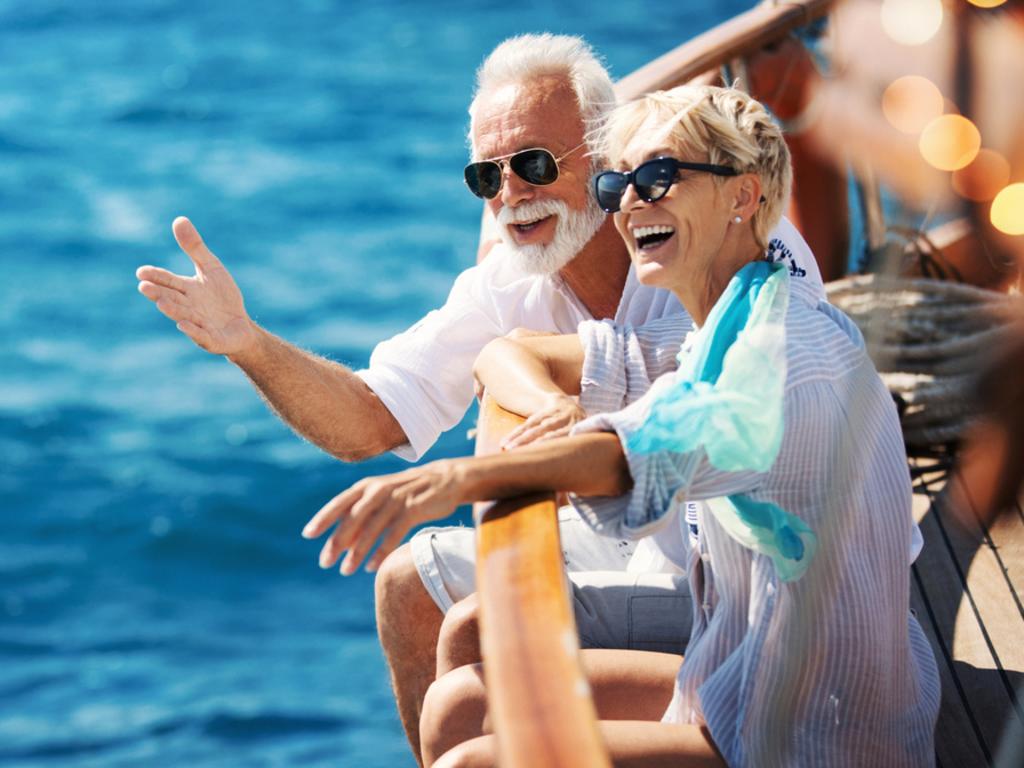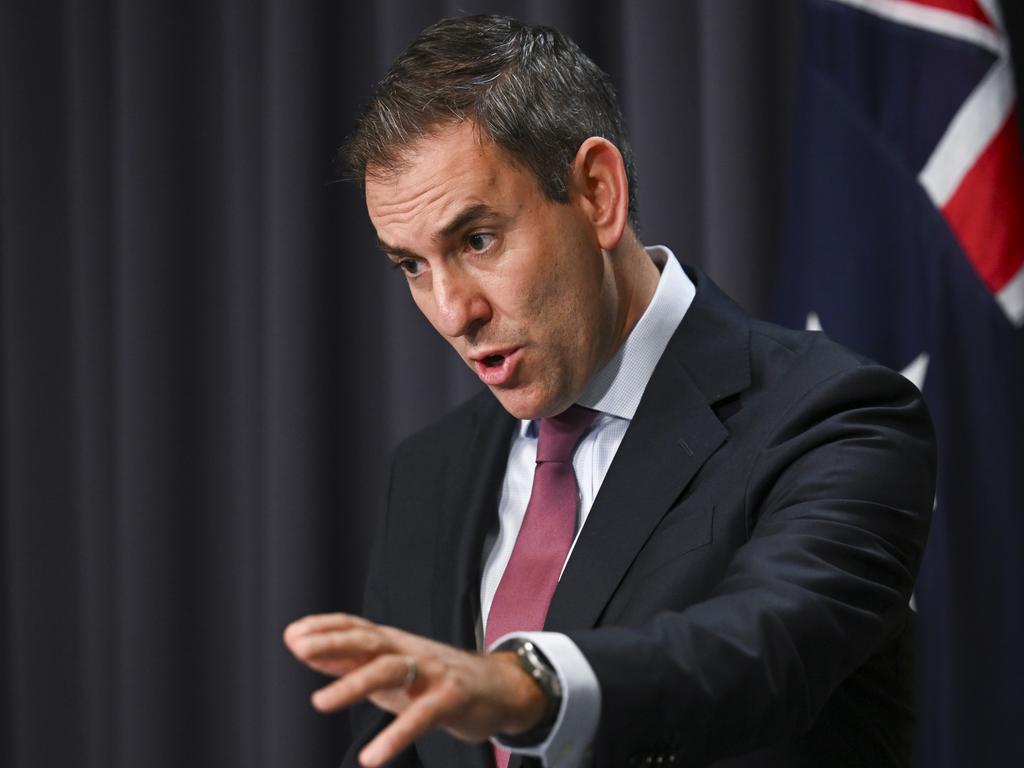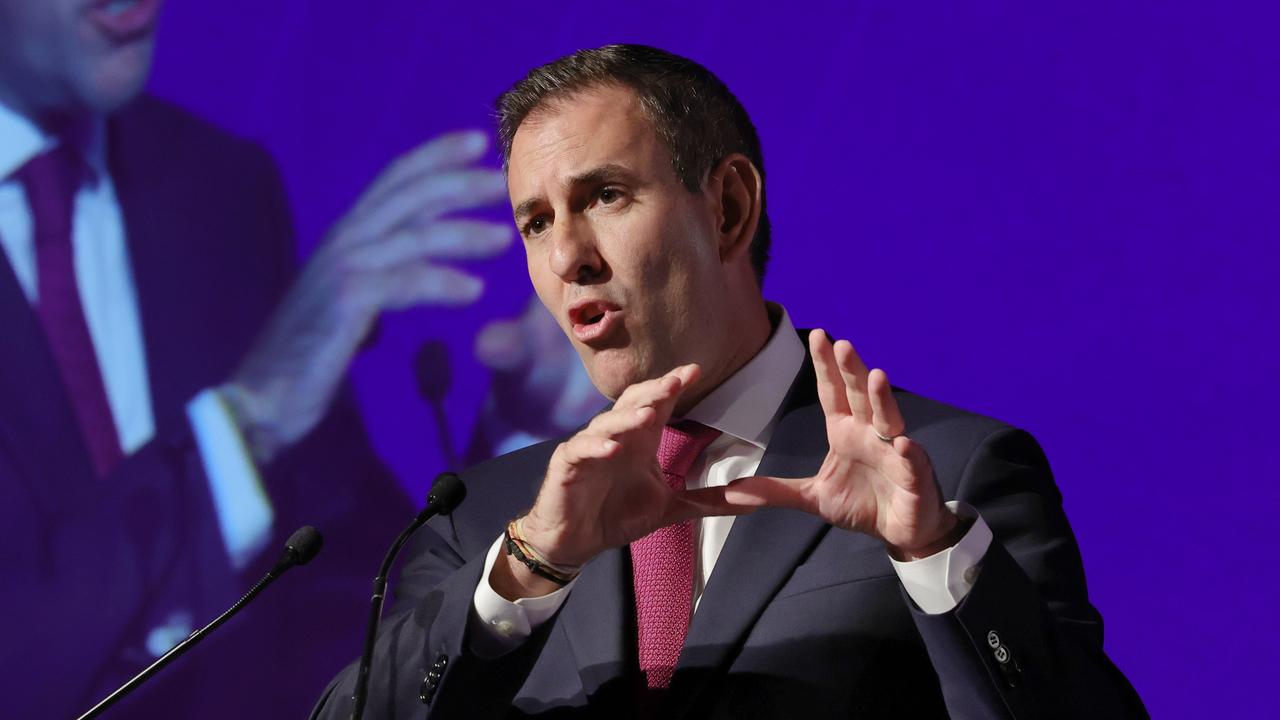
It’s not a sustainable game plan to raise material living standards, which have fallen by more than 10 per cent during the past three years and in dollar terms are around the level they were five years ago.
Jim Chalmers highlights rays of hope – inflation is down, tax cuts, wages growth, bill relief – but voters aren’t buying it.
It will take a few more quarters of household income growth, further drops in inflation and cuts in borrowing rates to convince families that better days are ahead.
On these economy-wide numbers, a mixed bag of worry and promise in the inflation fight, the Reserve Bank board will hold its line at next week’s meeting but could change its tune on the emerging risks to the economy, such as the turmoil overseas.
Since mid-2022, when the Albanese government came to power, the nation has recorded nine straight quarters of economic growth.
But for eight of those, and the last seven in a row, the burst in population, with an influx of foreign students and workers, has outpaced the rise in national output.
In rounded terms, gross domestic product has increased by 3.4 per cent over the Labor journey, while the population has jumped by 5.5 per cent, or 1.43 million.
In the year to September, GDP rose by 0.8 per cent; other than during the Covid crisis, it’s a growth rate not seen since the 1990s recession.
Company profits have tumbled, while government-backed wage rises in the care sector and for the lowest paid have lifted pay rates.
On an otherwise grim day for workers, the Treasurer skited about a reversal in the sharing of spoils in these early days of his reinvented capitalism.
“The rise in employee compensation has seen the labour share of income rise to 53.5 per cent, up from 49.3 per cent at the time of the election,” Chalmers said.
Economists, who were expecting a slightly better performance from a wounded private patient with a weak pulse, didn’t hold back in their assessments.
Deloitte’s Pradeep Philip said “the private economy has been clobbered”.
CBA’s Gareth Aird said “economic growth in the private sector has been non-existent over the past two quarters”.
Westpac’s Pat Bustamante observed “the consumer sector continues to be sick”, with household spending growth of 0.4 per cent over a year when the population expanded by an estimated 2.4 per cent.
EY chief economist Cherelle Murphy captured corporate Australia’s vibe perfectly.
“The September National Accounts paint a picture of a sad economy without much hope,” she said.
“The private sector needs more from their governments than short-term fixes to today’s problems.”
Unit labour costs are a worry, given the sagging productivity performance in the burgeoning “non-market sector”, which is mainly funded by taxpayers, as are a weakening in export prices, slide in business investment plans and wary consumers.
Presently, the size of the government footprint in the economy is at a record high share of 28 per cent, with an almost 5 per cent after inflation spending bonanza on “big build” capital works, defence projects, wages and living-cost relief.
For readers with long memories, public demand was around 20 per cent of GDP when Gough Whitlam came to power.
Governments can be relied on to come to the rescue in a crisis. Yet when the danger has passed, and they mess with the animal spirits that delivered decades of success, it conjures new problems and usually ends in tears.







The engine of Australia’s long-term prosperity has broken down, with an ailing private sector propped up by government spending splurges and record population growth.